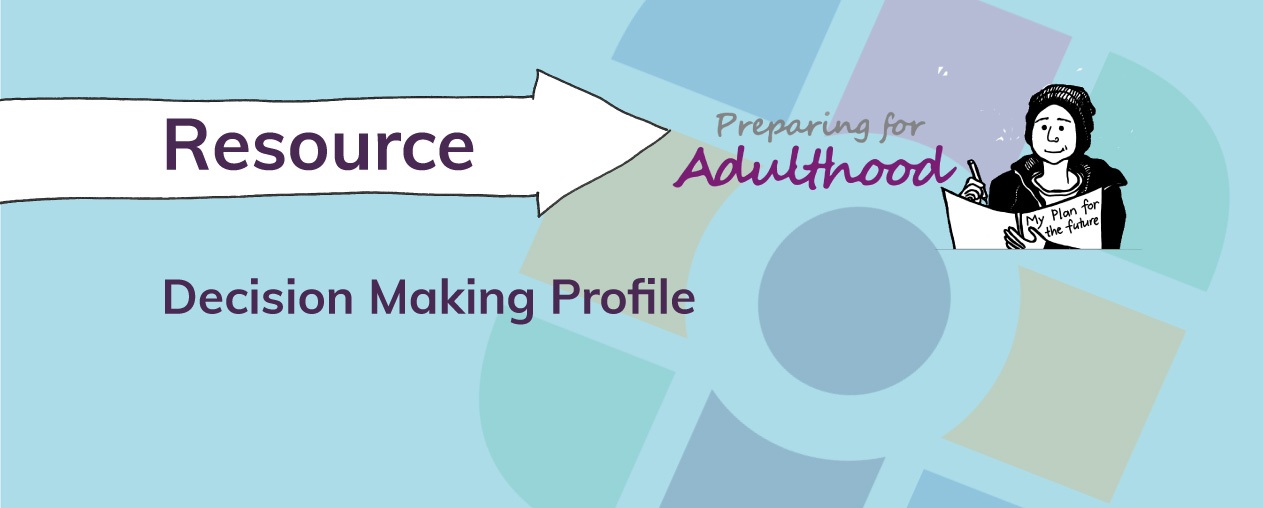Decision Making Profile
The decision-making profile creates a clear picture about how a person makes a decision and how they want to be supported in decision-making.

This tool describes how to provide information in a way that makes sense to that person, this could be how they want you to structure your language, if they want written words, symbols or pictures or perhaps an audio format.
It breaks the decision-making process into five sections:
- How I like to get information
- How to present choices to me
- Ways you can help me understand
- When is the best time for me to make decisions?
- When is a bad time for me to make a decision?
When you are completing a decision-making profile with a person look at their one-page profile and communication chart. See what these tell you about the best times and ways to support the person to make a decision. Talk to the person and those they know well to check this information with them and add to it. It might help to think about a decision the person has had to make in the past and then think about what worked and what did not work for them about how they were supported.
This help us to support a person to understand choices that are available to them and make informed decisions. This is invaluable when thinking about consent and capacity.
Once a decision-making profile has been completed it can be helpful to consider the support a person needs to make certain decisions and the following questions can be helpful:
- Do I fully understand what is important to the person and their communication?
- Am I the best person to support this decision-making?
- Is the information that I have and am giving the person relevant to the decision?
- Am I presenting it in a way that the person can understand?
- I am giving the information in the right place and time?
- Have I given the person the best chance to make the decision themselves?
You can then work with the person to explore: ‘important decisions in my life’ / ‘how I must be involved’ / ‘who makes the final decision?’.
This then helps us to reflect on how decisions are made and who is making them and to think about how much choice and control a person has in their life and, if the balance is wrong, to make positive changes.
Related Projects
Useful Info
This resource was created by the National Development Team for Inclusion as part of our delivery of the Preparing for Adulthood programme, which was funded by the Department of Education to support the SEND reforms.